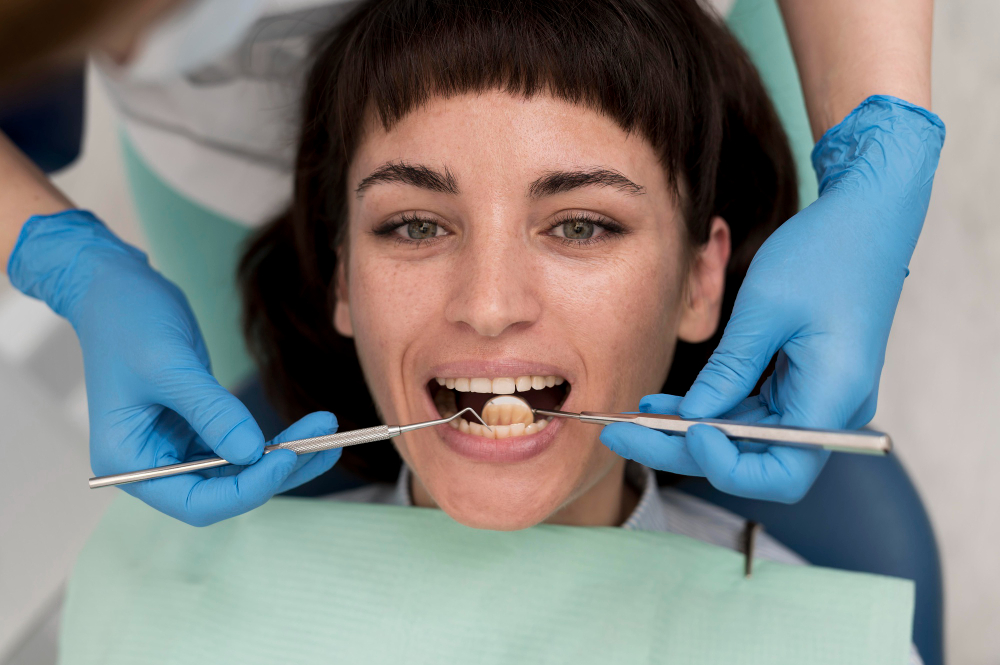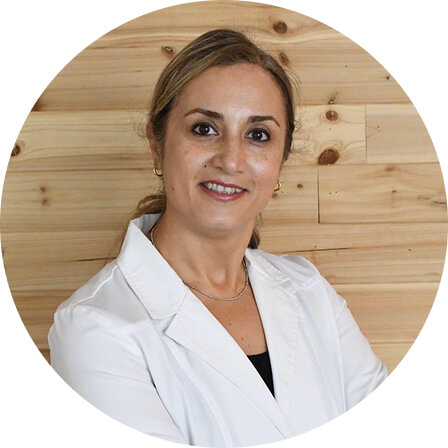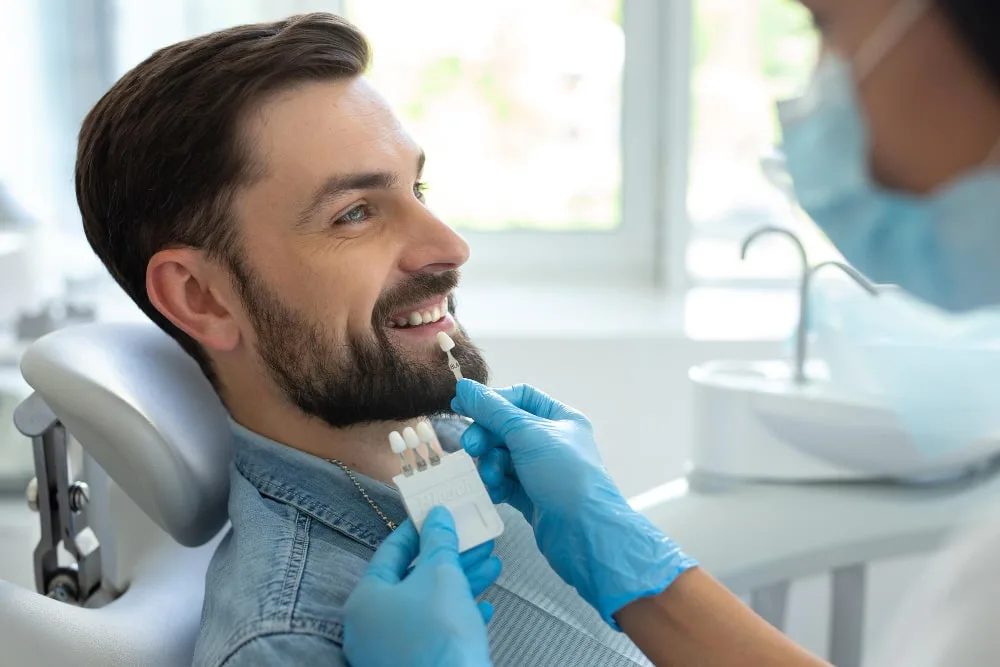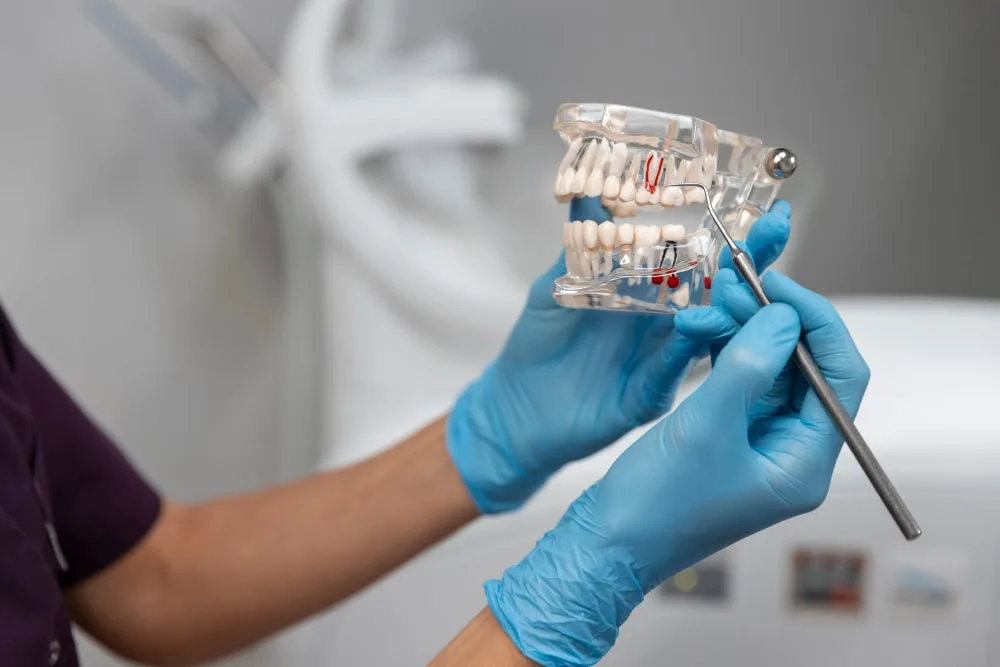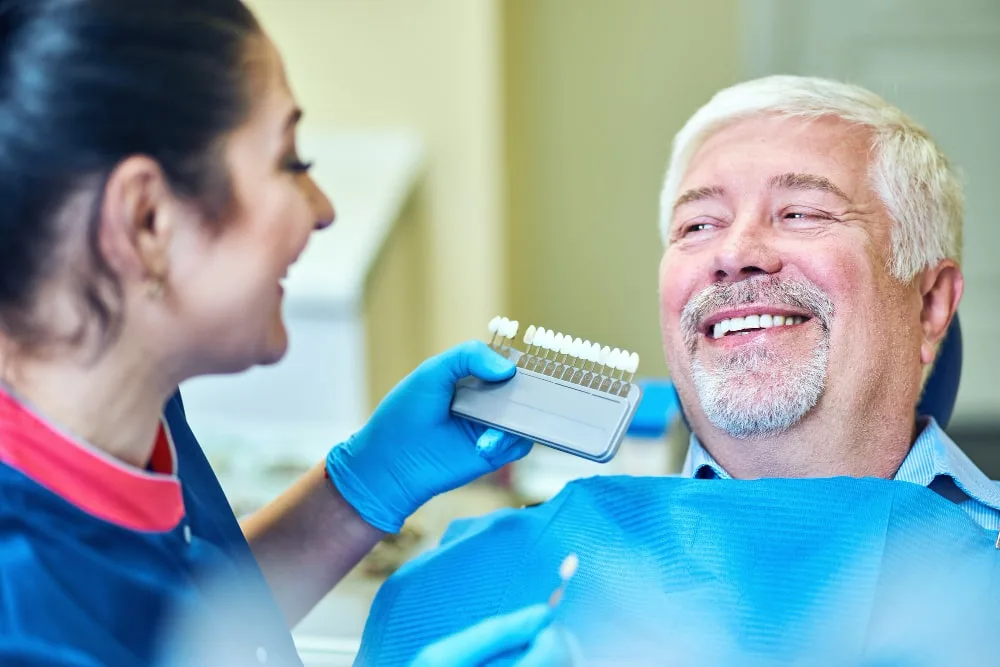Dental implants are generally the long-term solution if you have lost a tooth and are now seeking a permanent replacement. They look, feel, and function just like natural teeth, and are often recommended for their durability and ability to preserve jawbone health. But here’s what most people don’t know: Not all dental implants are the same.
The type of implant your dentist recommends depends on many factors, including your bone structure, location of the missing tooth, and whether there’s a need for full restoration or just one replacement. Other factors include your long-term health goals. That’s why it’s essential to understand the different options available for you. Being informed will help you feel confident and avoid any surprises during the process.
So before you move forward with treatment, it’s essential to know the difference between the main types of dental implants, and which one is the best fit for you. Let’s take a closer look at the three main types of dental implants used in modern dentistry today.
1. Endosteal Implants
Endosteal implants are posts shaped like screws, cylinders, or blades, which are placed in the jawbone when it is healthy, acting as artificial roots on which anything from a single crown to a bridge or a full arch can be secured. They usually have a high success rate of approximately 95%.
Ideal Candidates for Endosteal Implants
- Adults with enough bone height and density (or willing to undergo grafting)
- Non-smokers or individuals who can commit to quitting during healing
- People with good overall health
Treatment Procedure
- Placement: The titanium post is seated into the jaw under local anesthetic or IV sedation.
- Osseointegration: The bone gets fused to the implant over 3–6 months. You might be required to wear a temporary tooth during this phase.
- Restoration: Your dentist attaches an abutment and final crown, bridge, or denture.
Benefits of Endosteal Implants
- Long-term durability
- Natural chewing force
- Flexible designs
Potential Drawbacks of Endosteal Implants
- Need sufficient bone or a graft
- Invasive procedure unless sedation is offered
- The price is on the higher end
2. Subperiosteal Implants
Subperiosteal implants are positioned on the jawbone but beneath the soft tissue. They feature a lightweight, specially-designed metal substructure, with small posts through the gum to support a bridge or denture.
Ideal Candidates for Subperiosteal Implants
- Significant bone loss that precludes using traditional screws
- A patient who cannot or does not want to undergo bone-augmentation surgery
- A preference for rapid restoration (fewer surgical procedures)
Treatment Procedure
- Imaging & impression: Your dentist will take a 3-D scan or a physical impression in order to custom-design the frame.
- Frame placement: The surgeon places the frame underneath the periosteum. The procedure is performed under local anesthetic. There is no drilling into a physical piece of bone.
- Prosthesis fitting: After soft-tissue healing occurs (2-3 weeks), either a fixed or removable denture is secured to the posts.
Benefits of Subperiosteal Implants
- Avoidance of bone grafts and sinus lifts
- Custom-fitted for comfort and load distribution
- Typically faster total treatment than combining grafting with endosteal implants
Potential Drawbacks of Subperiosteal Implants
- Need sufficient bone or a graft
- Invasive procedure unless sedation is offered
- The price is on the higher end
3. Zygomatic Implants
Zygomatic implants skip the resorbed upper-jaw (maxilla) entirely and anchor into the dense cheek (zygomatic) bone. Posts are 30-55 mm and emerge in the palate to support a full-arch bridge on the same day.
Ideal Candidates for Zygomatic Implants
- Patients with extreme bone loss due to long-term denture use, trauma, tumor resection, or congenital defects
- Individuals who have been told they “do not have enough bone” even to graft
- Individuals who want immediate load without months of sinus-lift healing
Treatment Procedure
- 3‑D planning to avoid nerves and sinus cavities.
- Placement through the gum, angling the implant into the zygoma.
- Cross-arch stabilization, generally, 2 zygomatic and 2 conventional anterior implants are splinted together to support a full-arch bridge across the arch and delivered same day within 24 hours.
Benefits of Zygomatic Implants
- Eliminate complex grafting procedures.
- Restore quickly and functionally, often in one visit.
- Very high survival rates
Drawbacks of Zygomatic Implants
- Technically difficult surgery best performed by fellowship-trained surgeons
- Higher price per implant (often $8,000-$15,000, including materials and surgery)
- Complications may include sinusitis, lip or cheek numbness, or implant failure (rare)
Key Differences Between the 3 Dental Implants
| Feature | Endosteal | Subperiosteal | Zygomatic |
| Primary anchor | Inside jawbone | On top of bone, beneath gum | Into cheek bone |
| Bone‑graft needed? | Often | Rarely | No |
| Typical use | Single to full‑arch | Full‑arch when bone is thin | Full‑arch when bone is severely resorbed |
| Chair‑time complexity | Moderate | Low‑to‑moderate | High |
| Success rate (10 years) | Approximately 95% | 80-90 % | Over 90 % |
| Average cost* | $3,000–$5,800 per unit | Similar to a graft‑free bridge | $8,000–$15,000 per implant |
| Best for | Healthy jaws | Moderate bone loss | Extreme upper‑jaw loss |
*National averages; your dentist will provide a personalized fee schedule.
Choosing the Right Implant: 5 Questions to Ask Your Dentist
Some of the questions to ask your dentist before selecting the right dental implants should be:
- Are you seeking a final tooth that is fixed or removable? Endosteal and zygomatic both support both types of teeth, while subperiosteal is often paired with fixed hybrid bridges.
- Are you willing to undergo a bone graft? If yes, endosteal remains the gold standard. If no, you can choose subperiosteal or zygomatic to skip the graft entirely.
- What is your medical history? Chronic conditions, smoking, and medications (like bisphosphonates) can affect implant selection and healing ability.
- What is your maintenance plan for the long term? Implants will require a home routine and yearly professional assessment to minimize the chances of peri-implantitis.
Final Words
If you’re considering dental implants right now, first book a consultation in our office with Dr. Javadi at Orchid Periodontics & Dental Implants. Through the use of advanced 3D imaging along with a personalized approach, she carefully evaluates your bone support and oral condition, as well as your long-term goals, to provide the best implant option for you.
In most cases, your visit will include a full periodontal exam, a cone-beam CT scan, and a customized treatment plan, with complete clarification of any insurance plans, payment options, and timeframes to expect.
Book your appointment online or call us at (425) 775-2002, and take the first step towards a confident, lasting smile.
